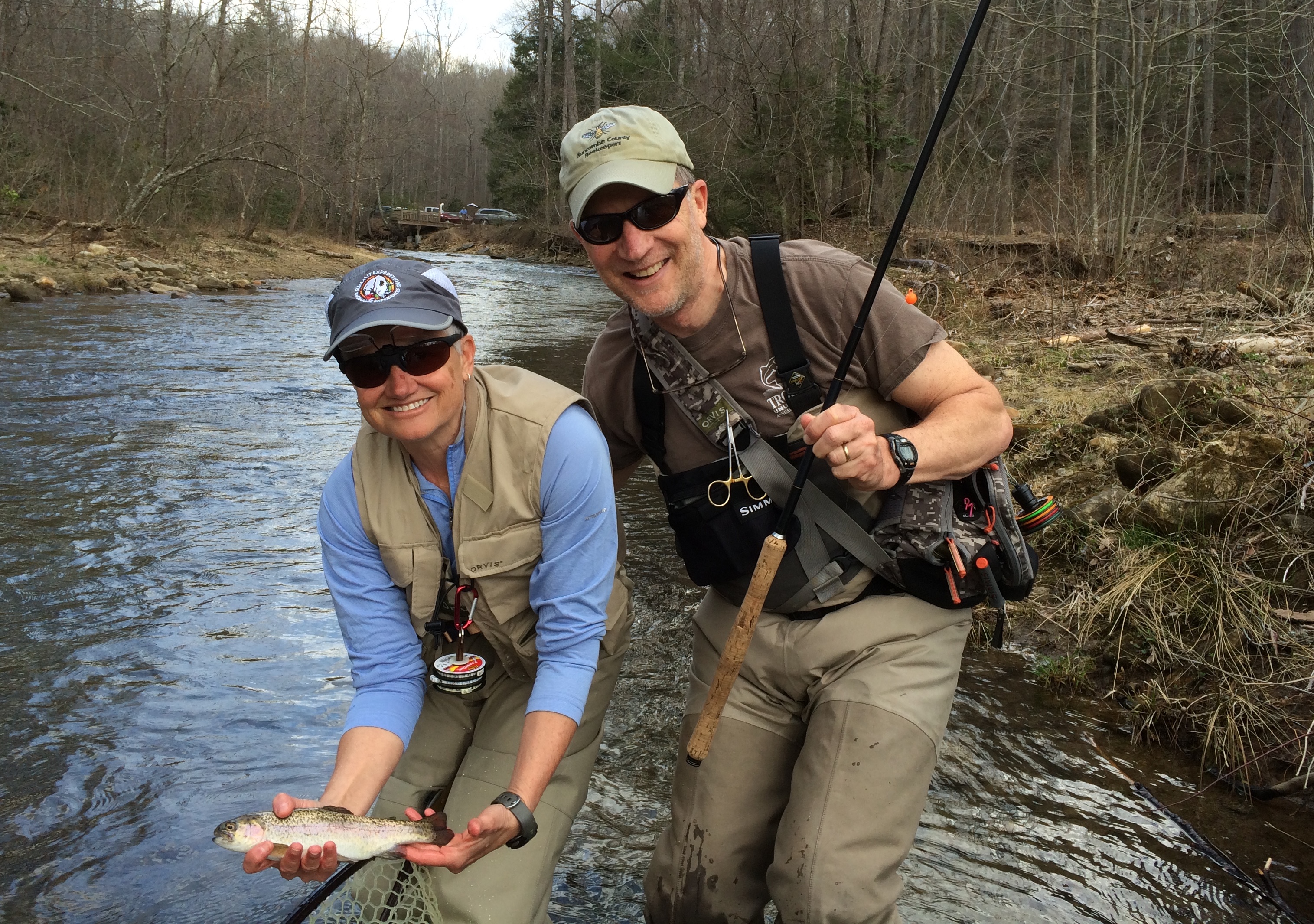Catch And Release Tips
Avoid Fishing when Conditions are Stressful
• Extreme low flows
• Water temperatures greater than 67°
Catching and Landing the Fish
• Use single, barbless hooks — Properly sized, single barbless hooks reduce fish handling time and injury. Barbs can be removed by flattening the barb with pliers or fishing hemostats.
• Keep the fish in the water and off rocks and land. Trout have protective slime coating that staves off infection and diseases.
• Avoid playing the fish to exhaustion and land it as quickly as possible. A tired fish takes longer to recover.
• Use a landing net to reduce handling time, stress and the potential for injury, especially for large fish that are difficult to manage.

Handling the Fish
• Keep the fish wet and calm. Removing fish from water causes stress, suffocation, and possible internal injury.
• Never hold a fish by the gills or by its jaw, which in most cases will cause the fish to die soon after release.
• Use wet hands or gloves to handle fish. Wet hands or gloves will help reduce the loss of a trout‘s protective slime coating.
• No “Hero Shots”. If you want to take a picture, keep the fish in the water (in a landing net) and lift it out for one or two seconds. If you can’ get the picture, let the fish go anyway.
Removing the Hook
• Keep the fish in the water or hold it upside down to calm and relax the fish.
• If a fish is hooked in the jaw and you can get hold of the hook, try removing it with a gentle shake.
• Needle-nosed pliers, hemostats and other hook removers are sometimes required for quick and efficient hook removal.
• If necessary, leave the hook! If the fish is hooked deeply or the hook cannot be easily removed, leave it. Cut your line as close to the hook as possible. The hook will rust away.
Releasing the Fish
• Let the fish fully recover before releasing it. Hold the fish underwater, in an upright position or secured in the landing net. If the fish has difficulty regaining its strength, then face the fish into the current, moving it gently side-to-side.
• In fast moving water, consider moving the fish to calmer water where it can recover and swim away on its own. Fast-moving or turbulent water can sweep away or injure a weakened fish.
I think I fish, in part, because it's an anti-social, bohemian business that, when gone about properly, puts you forever outside the mainstream culture without actually landing you in an institution.

